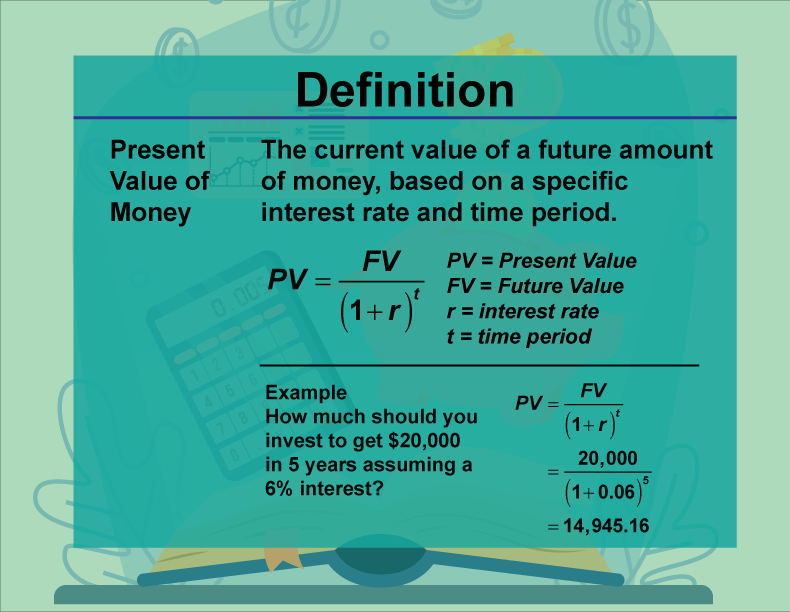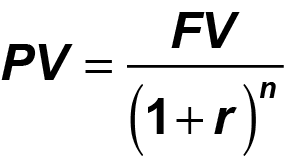
Display Title
Definition--Financial Literacy--Present Value of Money
Display Title
Present Value of Money

Topic
Financial Literacy
Definition
The present value of money is the current worth of a sum of money that is to be received in the future, discounted at a specified interest rate.
Description
The present value of money (PV) is a foundational principle in finance that allows individuals and businesses to assess the value of future income streams in today's terms. By applying a discount rate to future cash flows, one can determine their present value, which is crucial for investment and financial decision-making. Understanding this principle is particularly important in areas like retirement planning and capital budgeting, as it helps investors make informed choices about where to allocate resources. For instance, if one expects to receive $1,000 in five years, the present value indicates what that money is worth today, given a specific rate of return. This concept is crucial for gauging the attractiveness of various investment opportunities and comparing them on a level playing field. The present value calculation can be expressed mathematically as:

where FV represents the future value, r is the interest rate, and n is the number of periods. This formula serves as a critical tool for anyone looking to understand how money grows over time and the significance of the time value of money. In an educational setting, teachers might say, "The present value helps you figure out how much future money is worth today, which aids in budgeting and investment decisions."

For a complete collection of terms related to Financial Literacy click on this link: Financial Literacy Collection.
| Common Core Standards | CCSS.MATH.CONTENT.HSA.CED.A.1 |
|---|---|
| Grade Range | 8 - 10 |
| Curriculum Nodes |
Algebra • Expressions, Equations, and Inequalities • Numerical and Algebraic Expressions |
| Copyright Year | 2023 |
| Keywords | financial literacy, present value of money, future value of money |